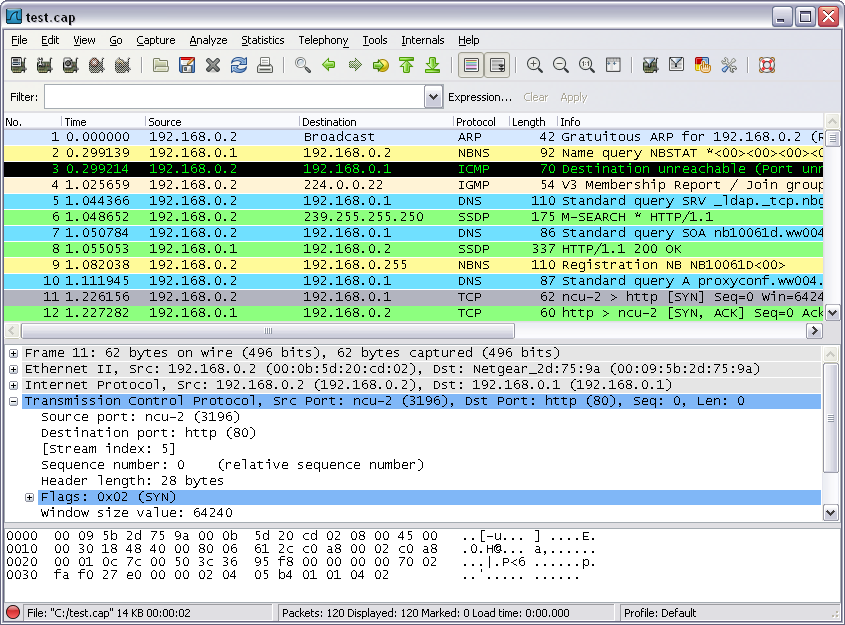

Wireshark lets you capture each of these packets and inspect them for data. Now you can understand the importance of Wireshark. Each data transfer involves thousands or even millions of these packets of data being sent between the source and the destination devices. IPV4 PacketĮach packet contains valuable information about the devices involved in a packet transfer. These packets are re-assembled by your computer to give you the original file.
#Wireshark tool download
When you download a file from the internet, the data is sent from the server as packets. When data is transferred from one computer to another, the data stream consists of smaller units called packets. Now that you have a solid grasp of the OSI model, let’s look at network packets.

If you are interested in learning more about the OSI model, here is a detailed article for you. The below diagram should help you to understand how these components work together. If you are using a browser, it is on the application layer.

Network Layer - Takes care of finding the best (and quickest) way to send the data.Data Link Layer- Makes sure the data is error-free.Physical Layer - Responsible for the actual physical connection between devices.The OSI Model segments network architecture into 7 layers: Application, Presentation, Session, Transport, Network, Datalink, and Physical. The Open Systems Interconnection (OSI) model standardizes the way two or more devices connect with each other. This is important to understand the core functions of Wireshark. I am assuming you are new to networking, so we will go through some basics of the OSI model. While most security tools are CLI based, Wireshark comes with a fantastic user interface. Wireshark is also completely open-source, thanks to the community of network engineers around the world. Most enterprises and government organizations now prefer Wireshark as their standard network analyzer. It can run on all major operating systems. Wireshark was first released in 1998 (and was called Ethereal back then). It lets you dissect your network packets at a microscopic level, giving you in-depth information on individual packets. Wireshark is a network analyzer that lets you see what’s happening on your network. In this article, we will look at it in detail. -w − write the output to the file mycapture identifier.Wireshark is the best network traffic analyzer and packet sniffer around.-b files: − the number of files to capture before overwriting the oldest.-b filesize: − file size in kB before starting a new.-i − interface number (listed from dumpcap -D).# dumpcap -i 1 -b filesize:100000 -b files:20 -w mycapture.pcapng pcap files of 100MB each, replacing the oldest file with the twenty-first file and so on… This allows a continuous capture without exhausting disk space. The following example will provide a ringbuffer capture. To see all dumpcap options, use the -h flag. Used in combination with tmux will allow the capture of packets in a detached session. Tcp.port=80||tcp.port=3306||tcp.port=443ĭumpcap is part of Wireshark and can be used for capturing packets without the GUI. This will filter traffic within any of the private network spaces.

To only see LAN traffic and no internet traffic, run If you would like to see all the incoming and outgoing traffic for a specific address, enter display filter ip.addr = 1.2.3.4, replacing 1.2.3.4 with the relevant IP address.Įxclude packets from a specific IP address ip.addr != 1.2.3.4.If you would like to see all the incoming traffic for a specific address, enter display filter ip.src = 1.2.3.4, replacing 1.2.3.4 with the IP address the incoming traffic is being sent to.If you would like to see all the traffic going to a specific address, enter display filter ip.dst = 1.2.3.4, replacing 1.2.3.4 with the IP address the outgoing traffic is being sent to.If you want to see all the current UDP packets, type udp into the Filter bar or in the CLI, enter: If you want to see all the current TCP packets, type tcp into the Filter bar or in the CLI, enter: For display filters, see wireshark-filter(4). Note: To learn the capture filter syntax, see pcap-filter(7).


 0 kommentar(er)
0 kommentar(er)
